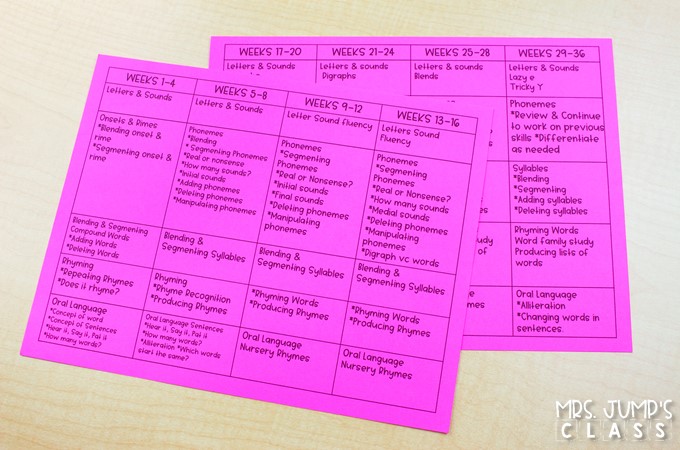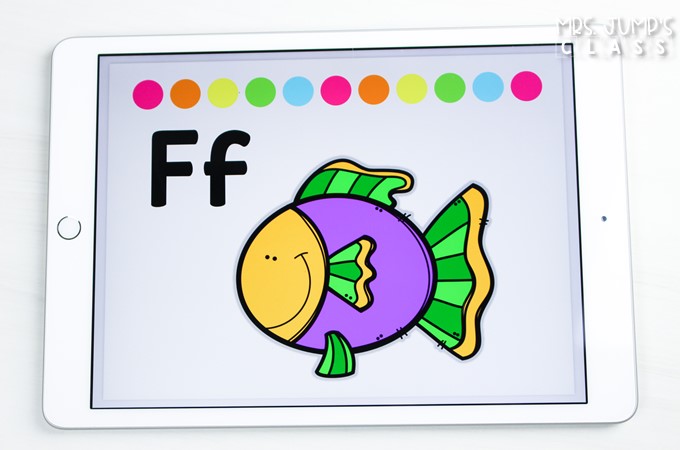Phonological awareness lesson plans and digital slides to make daily instruction simple! A systematic way to teach students to decode and spell words.
Phonological Awareness Lesson Plans
What if I told you that your students could develop into confident readers and writers who can decode and spell words, with just 10 minutes of phonological awareness instruction each day? Would you be running to get in line to find out how? As a teacher, I would be the first one there! Phonological awareness is the biggest piece of the puzzle when it comes to developing readers and writers. It is truly the foundation for success.
I want to show you an easy and no-prep way to teach your students phonological awareness. Whether you are teaching in the classroom or remotely, this daily program can work for you!
Scope and Sequence
I’ve put together 36 weeks of instruction for you. Plus, I provided the scope and sequence to make long-range planning simple!
You can choose from two options, based on the needs of your students. Scope and sequence option “A” follows the sequence for our kindergarten Engaging Readers units. On the other hand, if you are looking for a higher-level option that covers vowel teams, you will select option”B”. Both are included within the resource.
Lesson Plans
Yes, lesson plans! Exact details of what to teach and how to do it. There are also 2 options for lesson plans! Daily and weekly lesson plans are ready for you to print and start using right away. With the weekly lesson plans, all the activities for 5 days are located on one page.
The daily lesson plans include the same information, just in a larger font. Plus, I added a place for anecdotal notes. Add a post-it note and you’re ready to go!
Each daily lesson has correlating digital slides (and printable, too) for your instruction. Let’s take a deeper look at the lesson plan and what skills are covered.
Letters and Sounds
Students will learn the name and sound for each letter of the alphabet. In addition, a kinesthetic movement will be taught for each letter. Starting in week 17 of the option 1 lesson plans, students will learn digraphs; followed by blends, lazy e, and tricky y.
Onsets & Rimes / Phonemes
In weeks 1-4, students practice blending and segmenting onset & rime.
By week 5, students are identifying initial sounds and are ready to blend and segment phonemes. Students practice blending real and nonsense words as well as adding, deleting, & manipulating phonemes.
Syllables
Students practice blending and segmenting syllables and later begin adding and deleting syllables.

There are lesson plan covers for each week that outline each topic that is covered.
Rhyming
From repeating rhymes and rhyme recognition to a word family study of rhymes, students will be rhyming experts!
Oral Language
Oral language will not only help your students become successful readers but will strengthen their communication skills as well. In the beginning, oral language practice is simple. Students will repeat letters and words that will eventually turn into complete sentences where they identify the number of words. After that, students have fun with nursery rhymes.
Phonological Awareness Complete Program
36 weeks of lesson plans and student cards (both printable and digital) are available in one comprehensive unit!
Make teaching phonological awareness simple! Click here to find this resource in my TpT store:
I also have an advanced version that was created for first and second grade.
Would you like to see more about this unit? Here are a couple of blog posts for you:
📌 CLICK HERE TO SAVE THIS PIN FOR LATER!
















